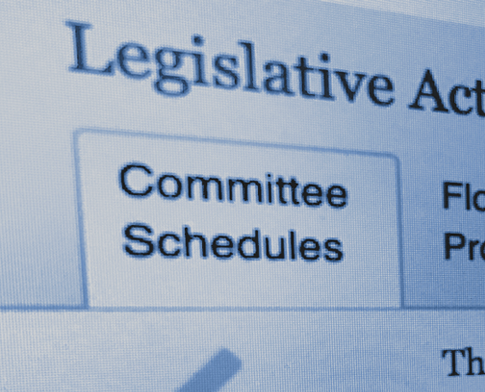Supreme Court Vacancy
On Friday (Sep. 18), Supreme Court Justice Ruth Bader Ginsburg passed away at the age of 87 after a battle with pancreatic cancer. Ginsburg was known as a champion of gender equality, civil liberties, and pay equity, and also leaves behind a long environmental legacy.
President Trump plans to announce a nominee to fill Ginsburg’s seat on Saturday (Sep. 26). On Friday (Sep. 25), Republican sources said President Trump intends to select Amy Coney Barrett, a 48-year-old judge on Chicago’s 7th U.S. Circuit Court of Appeals. Senate Majority Leader Mitch McConnell (R-KY) announced he will hold a vote for the nominee, and appears to have the votes needed for a confirmation to go through. Senators Lisa Murkowski (R-AK) and Susan Collins (R-ME) are the only GOP senators to oppose immediately filling Ginsburg’s seat.
The court will hold its post-summer break conference on Sep. 29, 2020. Justices are slated to discuss whether to take several high-profile energy cases. Additionally, the court is set to sit for arguments in two minor environmental cases in the coming months, potentially before a new justice is confirmed.
Congress
Energy Bill
On Thursday (Sep. 24), the House passed the Clean Energy and Jobs Innovation Act, a broad clean energy package, by vote of 220-185. The bill costs around $135 billion.
The legislation would establish more rigorous building codes, create research and development programs for renewables, work to lessen pollution from fossil fuel production, and bolster weatherization programs and energy efficiency.[1]
A similar package was introduced in the Senate this year. If the Senate passes its own bill, the chambers could go to conference to resolve their disagreements.
To view the text of the bill, click here.
FY2021 Funding
Late Tuesday evening (Sep. 22), the House passed a stopgap funding bill to keep the government running through Dec. 11, 2020. The Senate plans to hold a final vote on a funding bill next Tuesday (Sep. 29), putting it right up against the Wednesday deadline to prevent a shutdown.
COVID-19 Stimulus
On Thursday (Sep. 24), House Speaker Nancy Pelosi (D-CA) indicated Democrats will draft a new COVID-19 relief bill and bring it to a vote before Oct. 2, 2020. Chairman of the House Ways and Means Committee Richard Neal (D-MA) estimated the new package will be in the range of $2.2 trillion.
The new legislation comes as Treasury Secretary Steven Mnuchin and Pelosi have agreed to restart talks about a second stimulus bill.
New Legislation
Future Generations Protection Act
Last week, Representatives Jan Schakowsky (D-IL) and Nanette Diaz Barragán (D-CA) introduced legislation to ban greenhouse gas emissions from new power plants. H.R. 8312, the Future Generations Protection Act, would also ban hydraulic fracturing and exports of crude oil and liquified natural gas.
The legislation would go further than other proposals on climate change and would have a difficult time gaining support among moderate Democrats. Schakowsky said the bill would be most effective paired with jobs legislation that could help workers displaced by a transition away from fossil fuels.
“These once-in-a-generation disasters are now normal occurrences and securing our environmental health and prosperity for future generations requires that we address the source of the problem — fossil fuels,” Schakowsky said in a statement. “Of course, Congress must be thorough when it comes to passing legislation that has the potential to cause mass labor displacement and pair this bill with a jobs package,” she added.[2]
Building U.S. Infrastructure Through Limited Delays and Efficient Reviews (BUILDER) Act
On Tuesday (Sep. 22), Representatives Garret Graves (R-LA) and Rob Bishop (R-UT) introduced legislation to reform the National Environmental Policy Act (NEPA).
The “BUILDER Act,” would speed up projects and includes a provision that would require potential litigants to have “participated meaningfully” in the NEPA process prior to filing a lawsuit. The bill would also clarify that regulators can use existing data rather than undertaking new research for environmental review, and ensure reviews are focused on a projec
“Congress created this vague language,” Bishop said. “Only Congress can get it right,” he added.
Around 100 Democrats sent a letter to Trump and urged him to desert his NEPA rewrite process, but he refused, so the regulatory changes went to effect last week.[3]
California
On Wednesday (Sep. 23), California Governor Gavin Newsom (D) ordered the state to ban new gas vehicles within 15 years. Newsom said the move was necessary to combat climate change and to encourage automakers to focus on electric vehicles (EV).
Republicans said the order was an overstep in a year of “unprecedented” executive decisions. Trump could also use the opportunity to criticize Democrats for being out of touch by forcing drivers into purchasing EVs.
California would likely need EPA approval to end sales of internal combustion engine cars.[4]
Additionally, Newsom signed an Executive Order that called for California to “end the issuance of new hydraulic fracturing permits by 2024.” He also called for the Legislature to send him a bill to ban the process of hydraulic fracturing.
“We will be directing and working very specifically on a legislative strategy to begin the phaseout formally of fracking here in the state,” Newsom said. “That is a commitment, a firm commitment from this administration, codified in this executive order, that will be advanced January in the new legislative session to advance that cause as well,” he added.[5]
Logging
The Trump administration finalized a plan this week to open areas of the Tongass National Forest in Alaska to logging.
The 9.37 million acre area was previously protected under the 2001 Roadless Rule. The new environmental impact assessment puts the administration one step closer to exempting it from protections.
The plan said activities like timber harvesting, “tend to approximate and promote natural processes that would also release carbon to the atmosphere.”
Additionally, it said, “many management activities initially remove carbon from the forest ecosystem, but they can also result in long-term maintenance or increases in forest carbon uptake and storage by improving forest health and resilience to various types of stressors.”
The state of Alaska asked the federal government in 2018 to open up the area to logging to help support the local economies.[6]
To view the U.S. Department of Agriculture’s Final Environmental Impact Statement, click here.
References
[1] Frazin, Rachel. “House passes sweeping clean energy bill.” The Hill, 24 Sep. 2020. https://link.edgepilot.com/s/b0a38dbc/oBv4w9K93U_v0T1h0xMFNQ?u=https://thehill.com/policy/energy-environment/518102-house-passes-sweeping-clean-energy-bill
[2] Sobczyk, Nick. “Progressives float bill to ban new emissions.” E&E Daily, 21 Sep. 2020. https://link.edgepilot.com/s/6e21ff19/WuWjRzPO6UKkx6u9eW876Q?u=https://www.eenews.net/eedaily/2020/09/21/stories/1063714159
[3] Brugger, Kelsey & Joselow, Maxine. “Top Republicans introduce broad NEPA overhaul bill.” E&E Daily, 23 Sep. 2020. https://link.edgepilot.com/s/6e084b6b/VgR9jI8S9kenPZeYzDbpsg?u=https://www.eenews.net/eedaily/stories/1063714425/search?keyword=graves
[4] Bermel, Colby; Guillén, Alex; & Marinucci, Carla. “Newsom bans new gas cars – and begs Trump for a fight.” Politico Pro, 23 Sep. 2020. https://link.edgepilot.com/s/e8a2cbcc/TdIE90A-YkmNuEhRXsUO-Q?u=https://subscriber.politicopro.com/article/2020/09/newsom-calls-for-california-ban-on-new-gas-fueled-cars-by-2035-1999369
[5] White, Jeremy B. & Bermel, Colby. “Newsom delegates fracking ban to Legislature – and environmentalists are upset.” Politico Pro, 23 Sep. 2020. https://link.edgepilot.com/s/afeb4281/K4SesMVcqkSeJlSyrjVN1Q?u=https://subscriber.politicopro.com/article/2020/09/newsom-delegates-fracking-ban-to-legislature-and-environmentalists-are-upset-1999636
[6] Frazin, Rachel. “Trump administration finalizes plan to open up protected areas of Tongass National Forest to logging.” The Hill, 25 Sep. 2020.
https://link.edgepilot.com/s/3873f356/1MKPBwZ0tkq9xj6VKB1rJw?u=https://thehill.com/policy/energy-environment/518181-trump-administration-finalizes-plan-to-open-up-protected-areas-of


